Workplace flexibility is a topic that has received incredible attention over the last few years. While many conflate it with remote work, it goes well beyond that, presenting a strategic opportunity for many employers. Yet, what works in one environment may not work in another. As a fractional Chief Human Resources Officer (CHRO), I often consult with leaders who want to revisit their policies in this area. So below, I discuss the scope of workplace flexibility, its pros and cons, and offer tips for crafting a sensible approach for your company.
What Is Workplace Flexibility and Why Is It Important?
The phrase “workplace flexibility” refers to work arrangements where employees can adjust their schedules, locations, or means of production to optimize performance and work-life balance. Although the concept has been around (and practiced) for ages, it came into sharp focus during the COVID-19 pandemic, when many employers adopted remote work to allow for social distancing.
Creating a flexible work environment is beneficial for many reasons, but at the heart of it is the belief that companies thrive when their employees are happy, motivated, and engaged. Also, given that the workforce comprises people of varying ages and personalities, each with different desires, strengths, weaknesses, and priorities, allowing for some flexibility means you can attract a broader range of candidates to fill each role. That makes hiring and building a diverse workforce easier, boosting productivity and innovation.
However, companies, teams, and leaders also have needs. Running a successful business isn’t easy; you must be mindful of the bottom line. The trick is to consider the benefits and drawbacks, decide how much and what type of flexibility is appropriate for your environment, and then build that into your business practices and hiring strategies.
For example, here are some outcomes you could experience.
Benefits of a Flexible Workplace
- Increased employee engagement. Happy employees who feel cared for (rather than like a cog in the wheel) will care for the organization and perform better.
- Improved employee retention rates. When employees can more easily weave their work responsibilities into their lives, they will likely stick around because they will feel more satisfied and less stressed.
- Easier hiring. You gain access to a larger talent pool when you offer flexible work hours, locations, etc.
- A potential for increased productivity. Some employees feel less anxious and are more likely to thrive when they can minimize distractions and commuting time. That can lead to higher productivity and less downtime.
- Cost savings. Flexible, hybrid, and remote work models typically mean fewer employees needing office space simultaneously, potentially reducing your real estate and utility expenses.
- Offering flexibility typically leads to less commuting, which can reduce your carbon footprint.
Challenges of Flexible Work Environments
- A potential for lost productivity. Some employees find it distracting or isolating to work from home and perform better when physically surrounded by others.
- Difficulty onboarding new hires. We adapt to new environments by listening to and observing the behaviors of those around us. When these encounters are lacking or absent, some people disassociate. Those new to the workforce or who need more mentoring are particularly vulnerable.
- Flexible work schedules can lead to less interaction, inhibiting connection, culture, and camaraderie. That can make it challenging to ideate and innovate. It can also stifle the development of personal relationships, which matter because they help you empathize with your coworkers, easing collaboration and boosting employee satisfaction.
- A perceived lack of accountability. Some employers worry that employees lack accountability when given more freedom.
- Wasted resources. Many employers invested a lot of money into beautiful office spaces. If employees no longer use those spaces, you must make tough decisions.
However, I would argue that many of the challenges cited above are more of a leadership problem than a people problem and that bringing people back to the office won’t necessarily solve those issues. Many companies work remotely and do very well because they painstakingly address those concerns with planning, training, and clear expectations. But that requires you to proactively choose a path forward and commit to making it work.
Types of Flexibility in the Workplace

I mentioned earlier that much of the buzz around work flexibility concerns remote work partly because fully remote workers were less common before the pandemic. Some found they functioned quite well when forced to adapt, while others felt they lost something. For this reason, many employers have been demanding a return to the office (RTO). While some employees welcome it, others are highly resistant, putting many of those companies at risk of losing top talent.
However, please remember that flexibility isn’t just about remote work vs. non-remote work. Returning to the office can mean different things to different people. In addition to full-time work-from-home options, you can offer your employees many other types of flexibility. Here are a few examples.
- Hybrid Models –a certain number of required days in the office combined with optional remote days for roles where it makes sense.
- Job Sharing or Part-Time Options
- Shorter Workweeks, such as half-day Fridays, 4-day workweeks, or other variations
- Flexible Work Arrangements – where employees can rearrange their schedules or choose a different work location (within reason) to accommodate other obligations, like parent-teacher conferences, childcare issues, elder support, or caring for a sick family member.
- Sabbaticals – an extended period of paid leave for employees who have been with the company for a specific number of years
- Phase In Arrangements – allowing people on leave to ease back into work.
- Results or Project-Based Work Options – arrangements where team members agree to perform specific tasks or achieve certain goals for a set pay rate, regardless of when they work, where they work, or how much time is required.
Although RTO may be desired or necessary in some situations, we must remember that people want agency and control over their lives. A good employer-employee relationship is symbiotic, involving mutual respect, trust, and some give-and-take for both parties. If you believe returning to the office is essential for your organization, consider offering your employees choices, not draconian mandates. If you engage them in the conversation, explain what you are trying to do, and are willing to be flexible, your employees will likely flex for you.
Tips for Managing Workplace Flexibility
Many employers allow flexible work arrangements on a case-by-case basis, which can be confusing. Instead, I recommend you determine the proper path forward for your organization and then set clear expectations while minding the employee experience. I encourage you to think this through carefully because you will need an HR infrastructure to support it, but the following tips can help you get started.
Human Resource Infrastructure 360°™
Don’t let costly human resource issues creep up on you. Learn about the 5 components of HR Infrastructure 360°™ - our proprietary framework for building and supporting your team.
1. Clarify Exactly What You Want and Why
Think carefully about your company’s values, the type of organization you wish to build, the kinds of flexibility that could work for you, and why. In other words, how will these choices affect your outcomes?
For example, one company I worked with went through this exercise and decided they wanted to build a tight-knit organization where people could stay with them long-term, grow their careers, and eventually move into leadership roles. They felt that continuity was necessary for the business to thrive in its market and would require regular face-to-face interactions. Yet, much of their workforce had gone remote during the pandemic.
They decided that all company leaders would return to the office, then they would give their employees a choice. Employees could return to the office to be paired with a mentor to grow and develop their careers or remain remote, serving as individual contributors but with limited growth potential. They explained that either option was acceptable, but there would be tradeoffs. Some employees elected to return, while others did not, depending on their family situation, career stage, and individual priorities, but they all appreciated the honesty.
I’m not saying that was the only way to achieve this company’s goals. Many organizations do great with fully remote or other hybrid models, but given its unique makeup, it was the right call for this company.
2. Make Necessary Adjustments to Support Your Plans

Before implementing any changes, ensure your employees, managers, and teams will have what they need to succeed. That will involve examining your office space, technological solutions, budget, training programs, and other factors to identify and address any roadblocks.
For instance, if you ask everyone to work in the office four days each week but don’t have enough space for them to do so comfortably, you may need to adjust your plans. Also, how can you ensure that the transition is successful? Will you achieve your goals if people come in only to stare at their screens with their headphones on all day? Probably not, so what do you think should happen instead?
Conversely, if you decide to be fully remote, how will team members communicate, and how will you adjust your training programs to ensure that managers can be effective in that environment? Just because you make someone a leader doesn’t mean they know how to hire and manage people—remotely or not. You must provide resources, processes, tools, and guidance so they can properly onboard and manage your employees.
It is also essential to consider the economics of your plans. For example, if you intend to have employees working from home, will you provide an allowance for equipment or ergonomic office furniture? If so, how will that affect your budget? Perhaps you can give up some office space to offset those costs.
3. Capture Your Expectations in Writing
Once you know exactly what you want, put it all in writing. Create written policies and procedures specifying what types of flexibility you support, what is negotiable and what is not, how you will measure the results, and how to address complications. Then, build those expectations into your hiring plans, offer letters, employee onboarding, review processes, etc.
Finally, insist that your entire leadership team adheres to these expectations and holds each other accountable. Making such changes and potentially sacrificing valuable employees to make a transition will only be worthwhile if you walk the walk yourself to ensure the changes stick.
The Bottom Line
Workplace flexibility isn’t just about remote work vs. non-remote work. It’s about deciding what you want and how you will create it, balancing your business’s needs with your ideal employees’ needs to grow and scale confidently. At The CEO’s Right Hand, we help clients develop and implement such strategies daily. Reach out to discuss how we can help you.





